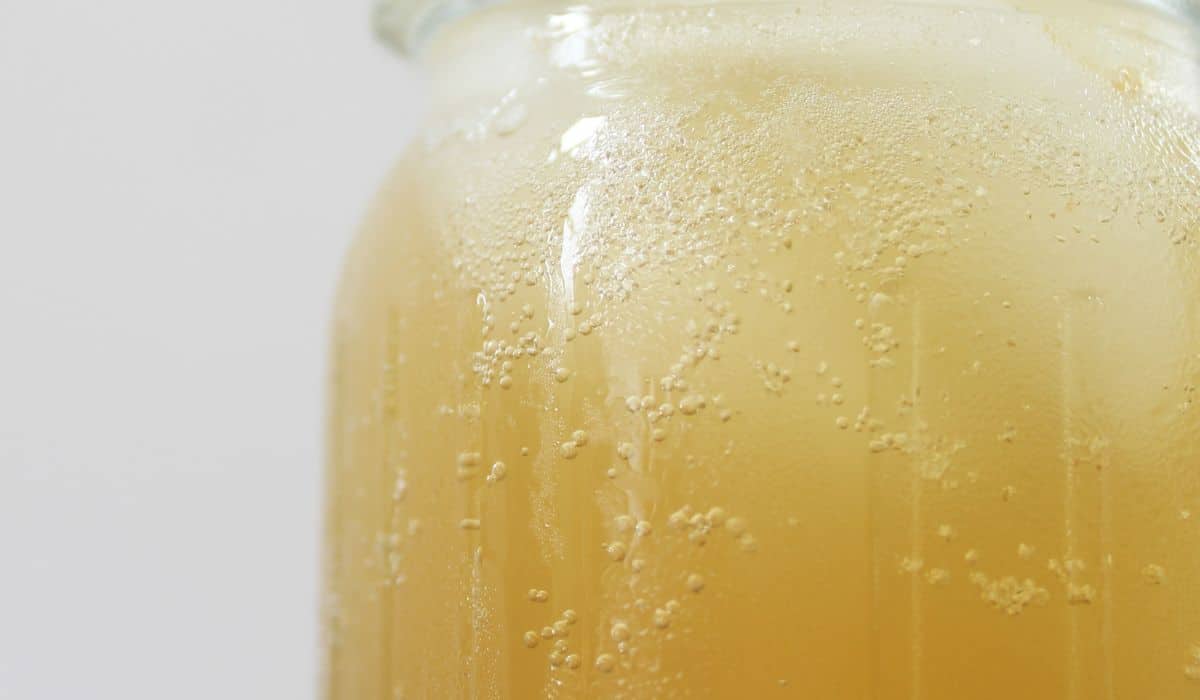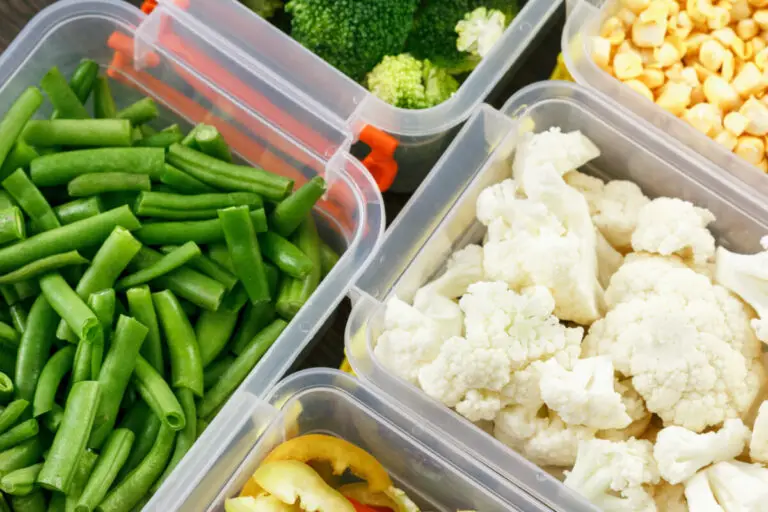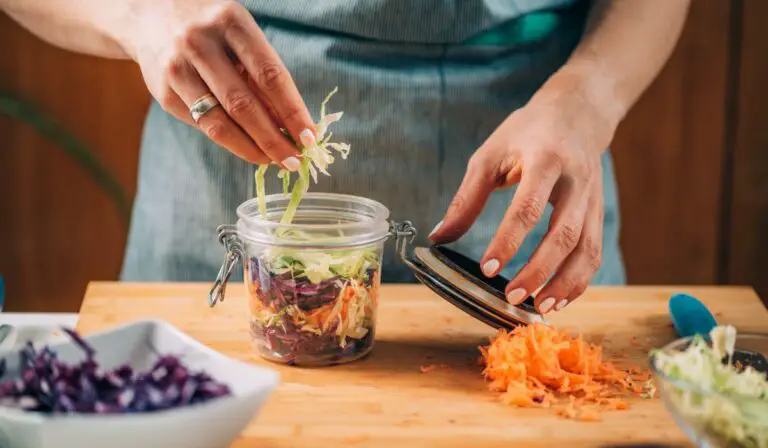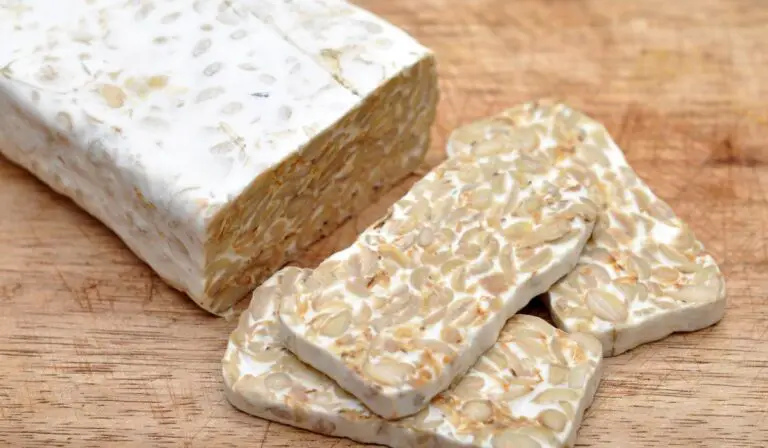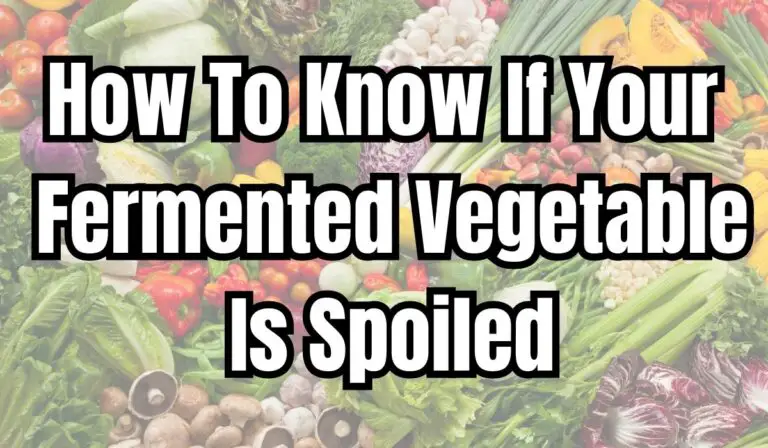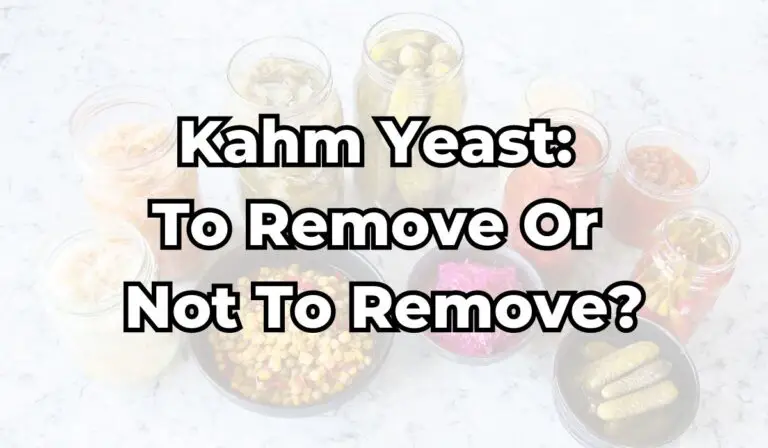What Are The Bubbles In Fermentation? Full Guide
Hey there, fellow fermentation enthusiasts! Today we’re going to dive into the fascinating world of bubbles in fermentation.
If you’ve ever made sauerkraut or kombucha, you know that bubbles are a common occurrence during fermentation. But have you ever wondered what those bubbles represent? Well, wonder no more – let’s explore the science behind them.
First things first: why do bubbles form during fermentation? Fermentation is a metabolic process in which microorganisms such as yeast or bacteria convert carbohydrates into alcohol or acetic acid. Bubbles form during this process due to the release of carbon dioxide gas, which is a byproduct of the breakdown of the carbohydrates. This gas is then trapped in the liquid, forming bubbles as it rises to the surface.
Understanding bubble formation can help us troubleshoot potential issues with our ferments and ensure that everything progresses smoothly.
So buckle up, grab your favourite jar of pickles, and let’s get ready to talk some serious bubbly business!
Why Fermentation Produce Bubbles? A Simple Explanation
The answer lies in the very heart of the fermentation process itself. As you may know, during fermentation, yeast activity is what breaks down sugars and other carbohydrates into alcohol or acid, depending on the specific type of ferment you’re working with. However, this is just one thing the yeast gets up to during their busy little lives.
In an anaerobic environment (meaning one without oxygen), which is precisely where most types of good fermentation occur, yeast will also produce carbon dioxide as a byproduct of their metabolic processes. This gas production leads to those lovely bubbles that are so characteristic of many fermented foods and beverages.
So next time you see them fizzing away merrily in your jar or bottle, remember that it’s all thanks to the hard work of our tiny microbial friends!

The Science Behind Bubbles On Fermentation
So, now we have a simple explanation of why fermentation produces bubbles. But let’s look into the science behind this process.
During fermentation, yeast activity increases as they consume sugars and convert them into energy through anaerobic respiration. Here is the simplified formula for this process:
Glucose + ADP + NADH → Lactic acids + ATP + NAD+
Fermentation Equation
If you want to dive deeper into the process, here is an excellent 3 minutes video that will go over it all.
As you can see, there is much more going on with those tiny bubbles than meets the eye! Understanding the science behind it all really enhances our appreciation for the art of fermentation.
So next time you pop open a bottle of bubbly kombucha or beer, take a moment to appreciate all the hard work and microscopic magic that went into creating those effervescent delights.
What If My Ferment Is Not Bubbling?
So, your ferment isn’t bubbling. You’ve read all the guides and watched countless videos on fermentation, but you’re still left with a jar of vegetables that looks like it’s doing nothing. Don’t panic!
The truth is bubbles are not always a reliable indicator of fermentation. Many ferments can undergo successful fermentation without any visible signs at all. Troubleshooting tips for non-bubbling ferments include observing the temperature at which you have stored your ferment. Fermentation thrives in warm environments, so if your ferment is sitting somewhere too cold, this may be why it has been slow to start or hasn’t started at all.
If you find yourself stuck with a slow ferment or no bubbles after several days, don’t give up just yet! Alternatives to bubbling could include other indicators, such as changes in colour or texture.
A good rule of thumb is to practice patience and observation when dealing with fermented foods. Allow some time for those beneficial bacteria cultures to thrive and work their magic before deciding whether your batch has failed. Remember: Rome wasn’t built in a day – neither are great-tasting ferments!
Here are some articles that go more in-depth on why your ferment is not bubbling and how to know if your vegetables are fermenting.
My Ferment Is Bubbling Too Much! What Should I Do?
Looks like your ferment is getting a bit too excited and bubbling too much! Don’t worry, this is a common issue, and there are ways to adjust the fermentation process. Troubleshooting bubbles in fermentation can be tricky, but with some simple adjustments, you’ll regain control over your ferment.
One effective method to prevent overflow is to move your ferment to a cooler location. This will slow down the fermentation process and reduce the amount of carbon dioxide being produced. Another option is to use an airlock or a blow-off tube to release excess gas without allowing outside air into the ferment.
Finally, if your container is completely sealed and you see your ferment is getting excited, make sure to burp it (open the lid a bit to release pressure), as pressure build-up could cause an explosion!
Remember that adjusting fermentation takes time and patience. Monitor your ferment regularly and make small changes when necessary until you achieve your desired outcome. With these tips, you should now have better control over your ferments!
Here is a simple way to know which direction to go!
| Goal | More Active Ferment | Less Active Fermente |
| Cause (Temperature) | Higher Temperature | Lower Temperature |
| Cause (Salt Ratio) | Less Salt | More Salt |
Conclusion
Fermenting foods is both a science and an art and understanding the science behind bubbles in fermentation can help us troubleshoot any issues and create delicious ferments. The key to successful fermentation lies in understanding the metabolic processes of yeast and other microorganisms, as well as the necessary environmental conditions for their growth. With some patience and observation, you can master the art of fermentation and create delicious, bubbly ferments that will truly impress your friends and family!
So go ahead, take a leap of faith and embrace the bubbles in fermentation – your taste buds (and tummy) will thank you!
Frequently Asked Questions
How Does Temperature Affect The Fermentation Process?
Fermentation temperature is one of the most critical factors affecting yeast activity and flavour profile.
The ideal temperature range for fermentation varies depending on the type of food being fermented but generally falls between 20-16°C (68-80°F).
Higher temperatures can lead to increased CO2 production and faster microbial growth but also increase the risk of off-flavours and spoilage.
On the other hand, lower temperatures may slow down fermentation too much, leading to a weaker finished product.
It is important to monitor the temperature closely throughout the entire process to achieve optimal results.
How Long Does The Fermentation Process Usually Take?
When it comes to fermentation, there are a lot of factors that can affect how long the process takes. The type of food being fermented, the temperature and humidity levels in the environment, and even the yeast or bacteria used can all play a role in determining how quickly your batch will be ready.
Some ferments, like sauerkraut, may take just a few days to develop their signature tangy flavour. Others, like wine or beer, can ferment for weeks or even months before they’re ready to drink.
Along the way, you’ll notice bubbles forming as carbon dioxide is released during the fermentation process – but don’t worry if yours doesn’t bubble quite as much as you expected! While bubbling is a good sign that things are happening, it’s not always an accurate indicator of progress, as discussed above and in this article.
Instead, focus on other signs of successful fermentation – like changes in texture or taste – and trust that with patience and practice, you’ll become an expert fermenter in no time!

